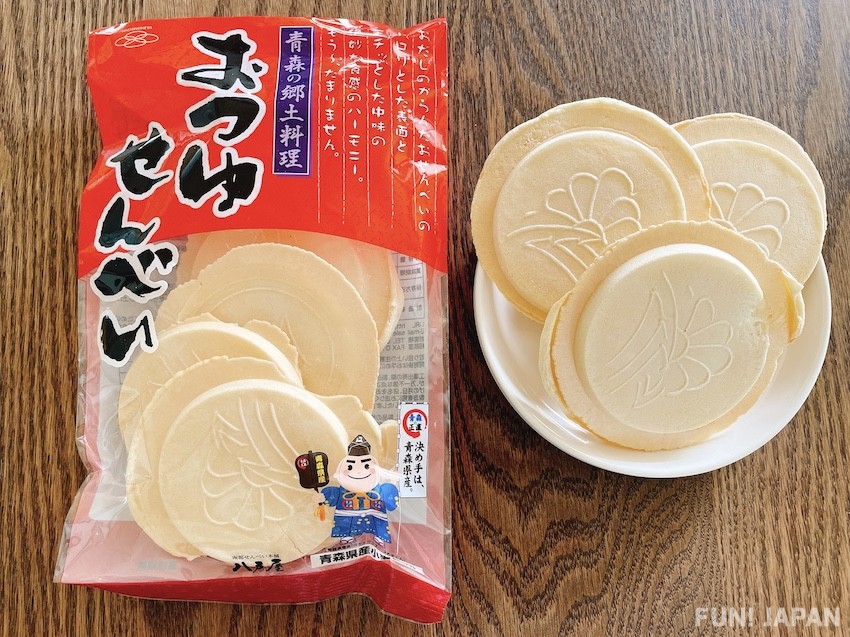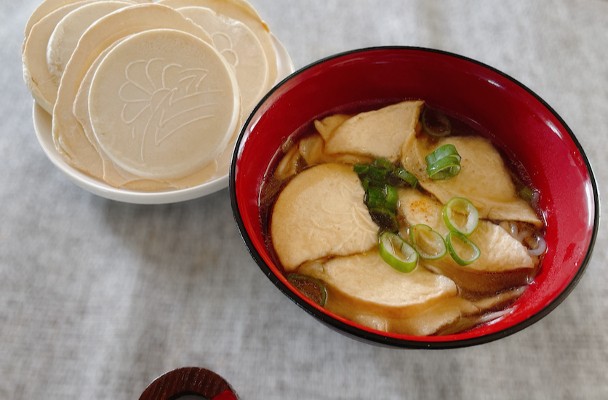Have you ever thought "let's tear off a rice cracker and put it in the soup"? In Aomori Prefecture, there is a dish called senbei-jiru (せんべい汁 - rice cracker soup), a traditional local cuisine that originated around Hachinohe City during the Edo period. As its name suggests, it is a soy sauce-based hot pot/stew dish which features wheat-flour crackers Nanbu-senbei. This time, I will introduce the origin and recipe of the dish.
What is Japanese local cuisine?
Local cuisine (郷土料理 / Kyodo-ryouri) refers to dishes suitable for the climate that have been eaten in a local area for many years by using regional products. Many of them are comfort food and are popular among Japanese for domestic gourmet trips.
Origin of Hachinohe Senbei-jiru

Nambu senbei is a traditional food from the southeastern part of Aomori Prefecture to the northern part of Iwate Prefecture, which was the territory of the former Nambu Clan. In post-war times, many local farmers had iron molds (can be used to cook senbei) in their households. Senbei was seen a valuable preserved food in regions where cold weather often prevented rice from being harvested. Senbei-jiru was then made by boiling the senbei in miso soup or in a pot. There is a legend that this dish first appeared before the war when rice crackers were boiled in a fishhead soup made with Japanese dace (ウグイ / ugui in Japanese) caught in the river.
The dish was handed down locally, but it wasn't until the Heisei period that the name "senbei-jiru" became well-known. Hachinohe City's tourism organization has launched a PR campaign to make what was once considered a plain dish only eaten at home a specialty for tourists. Today, it has become a leading figure in regional revitalization, whose name is known throughout the country.
Eating habits took root. It became a representative Tohoku local cuisine after the war!
In the old days, each household used to bake senbei, but during the war, farmers could no longer make senbei because iron pots were provided as munitions supplies. After the war, a manufacturer developed a senbei with a chewy texture that did not fall apart even when it was soaked in soup, and started selling it as a senbei for use in soup. Today, in addition to being eaten at home in miso soup and hot pot during the cold season, it is also popular as a major dish for tourists at restaurants and events.
How to enjoy Senbei-jiru
The most common way to enjoy Senbei-jiru is to put vegetables, konjac noodles, etc. in a soy sauce-flavored chicken broth pot, then simmer the 'senbei' crackers. It's also delicious if you add mushrooms such as shimeji mushrooms. Moreover, there are a lot plenty of variations, such as salty cod and grilled mackerel (you can easily use canned mackerel boiled in water at home), which is typical food of a port town, and miso-flavored sakura nabe using the famous horse meat.
Senbei-jiru ingredients

- 2 pieces of senbei for used in senbei-jiru
- 1/2 green onion
- 100g chicken breast
- 80g konjac noodles
- 1/4 burdock root
- 5g freeze-dried tofu
- 1/4 medium carrot
- 1/4 shimeji mushrooms
- 2 cups of water
【Seasoning A】
- 1 teaspoon dashi (soup stock)
- 1 tablespoon soy sauce
- 1 tablespoon of sake
- 1 teaspoon mirin
- a bit of salt
- a bit of shichimi chili pepper if you like
How to make Senbei-jiru - with video
Here is the video (with cc subtitles)👇👇👇
- Cut the chicken into pieces. Cut the carrots into strips, and cut the burdock root into thin strips. Cut the green onion diagonally.
- Pour hot water in a pot, boil the konjac noodles quickly to remove the scum, then drain the water.
- After throwing away the water used to boil the konjac noodles, heat the pot again and add oil.
- Fry the chicken until the surface changes color.
- Add vegetables and continue frying.
- When they are cooked through, add water. When it boils, add the dashi stock.
- Remove the scum.
- Add sake, mirin, soy sauce and salt.
- Add the freeze-dried tofu and boil until cooked through.
- Tear off the senbei and put them in the pot.
- And voila! It is done!


Comments